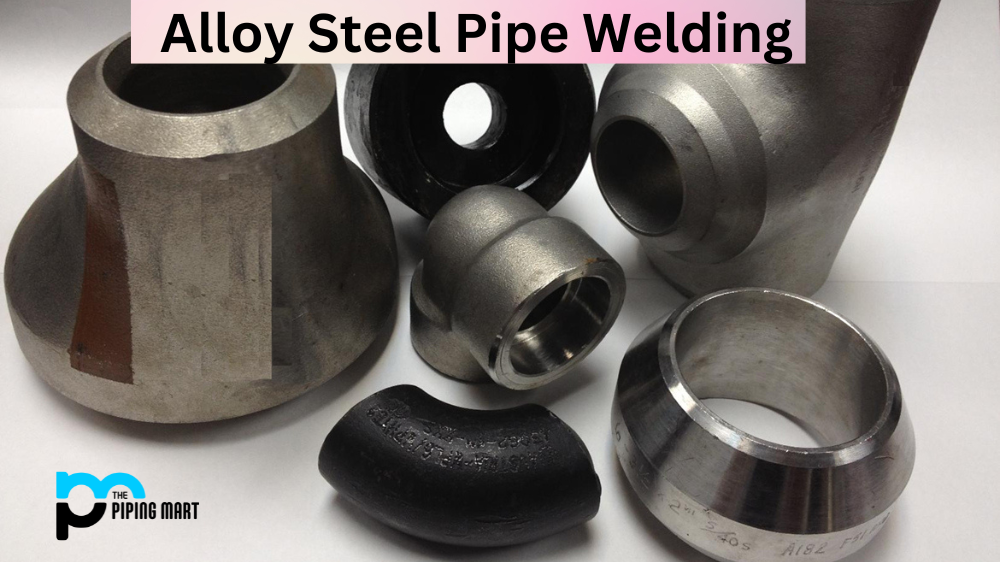Alloys are a combination of metallic elements, such as iron and carbon, that create a stronger material than the originals. Alloy steel pipe welding requires specialized electrodes to ensure a strong bond between metals. In addition, there is a specific procedure used for alloy steel pipe welding that needs to be followed in order for it to be successful. Let’s take a closer look at the electrodes and procedures needed for alloy steel pipe welding.
Alloy Steel Pipe Welding Electrodes
Alloy steel pipe welding electrodes are specifically designed for use with higher-grade alloys. They are made from materials that can withstand high temperatures, so they won’t break down or become brittle when exposed to extreme heat. Alloy steel pipe welding electrodes also have low levels of hydrogen and oxygen, which helps reduce the chances of porosity and other issues common with traditional electrodes.
Alloy steel welding procedure
The process of alloy steel pipe welding begins by preheating the material. This helps to reduce the risk of cracks occurring during the welding process. Once the material has been preheated, an electrode is selected based on its ability to handle the specific alloy being welded. The next step is to clean off any dirt or debris from the area where you will be performing the weld. This helps ensure that your weld will be strong and secure once it is complete. After cleaning, tack welds are done around the area where you plan on making your full weld; this helps ensure proper alignment before continuing on with the job. Finally, you can begin your full weld using your alloy steel pipe welding electrode; just make sure to move slowly so that you don’t cause any damage or inconsistencies in your weld line!
Selecting the Appropriate Alloy Steel
There are a variety of alloy steels available on the market, and each has its own set of properties that make it ideal for certain applications. When selecting an alloy steel for welding, it is important to consider the strength, hardness, and ductility of the material. Additionally, the weldability of the alloy steel should be taken into account.
Preparing the Base Metal
Once the appropriate alloy steel has been selected, the base metal must be prepared for welding. This typically involves cleaning the metal surface to remove any contaminants that could affect the quality of the weld. The metal may also need to be heated or cooled to reach the ideal welding temperature.
Welding Procedure
The next step is to establish the welding procedure that will be used. This includes setting the power output, gas flow rate, and travel speed. It is also important to determine the type of electrode that will be used. Once all of these factors have been determined, the actual welding process can begin.
Post-Welding Treatment
After the welding process is complete, it is important to properly treat the welded area in order to avoid any potential problems. This typically involves stress relieving or heat treatment in order to improve the strength and ductility of the weld joint. Additionally, it is often necessary to perform a corrosion test in order to ensure that the weld will not be susceptible to corrosion over time.
Quality Control
As with any manufacturing process, quality control is an important part of alloy steel welding. This typically involves nondestructive testing methods such as X-ray or ultrasonic testing in order to detect any defects in the weld joint. Additionally, destructive testing methods may be used in order to confirm the mechanical properties of the welded joint.
Conclusion
Alloy steel pipe welding requires specialized electrodes and procedures in order to achieve a strong bond between materials. It starts with selecting an electrode based on its ability to handle the specific alloy being used, then preheating the material before cleaning off any debris from where you will be performing your welds. Tack-welds should also be done before beginning your full weld line in order to align everything properly before continuing on with your job. These steps will help ensure a successful outcome when working with alloy steel pipes!

Pipingmart is B2B portal specializes in industrial, metal and piping products. Also, share latest information and news related to products, materials and different types grades to help business dealing in this industry.




